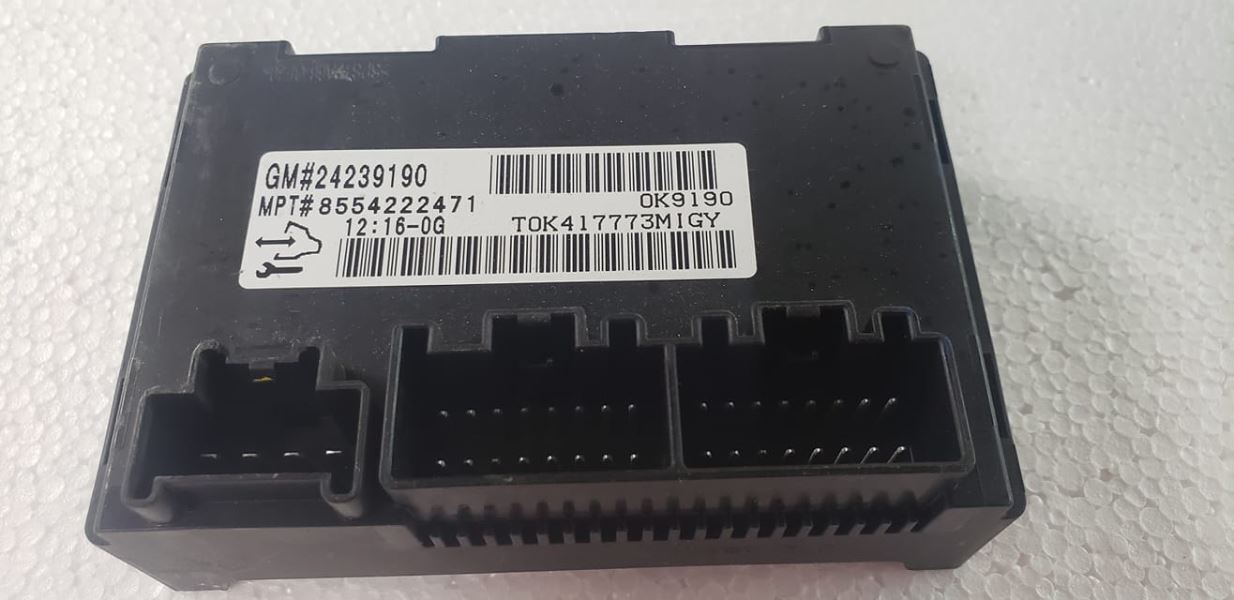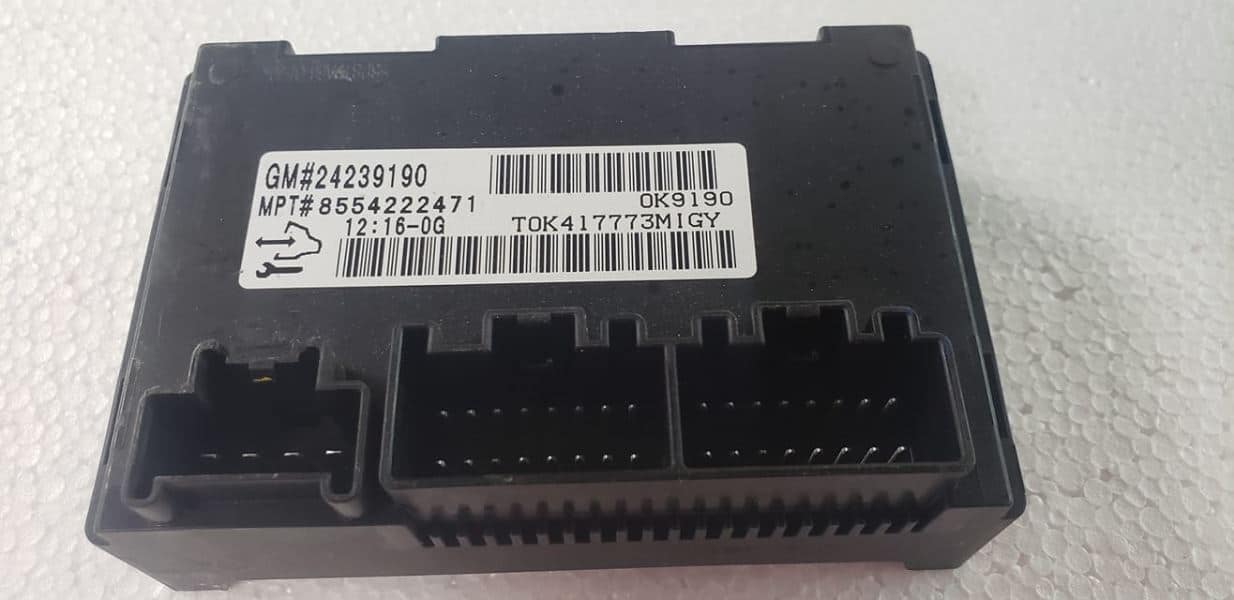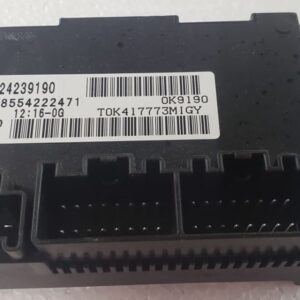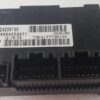Finally, A Real Fix for That Annoying ‘Service 4WD’ Light
If you’re staring at a ‘Service 4WD’ message on your 2011-2014 Sierra Denali 2500’s dash, you’re not alone. I’ve seen hundreds of these trucks roll into my bay with the same problem: the four-wheel drive is unresponsive, stuck in one mode, or the selector switch lights are flashing. More often than not, the culprit is a failed Transfer Case Control Module (TCCM). This isn’t just an annoyance; it’s a loss of the critical capability you rely on in tough weather and on demanding job sites. This module is the solution—a direct-fit, VIN-programmed TCCM that gets your truck’s 4×4 system back online without a trip to the dealership.
From the Diagnostic Bay: The Misleading Fault
A customer brought in his ’12 Sierra 2500, convinced he needed a new transfer case. His 4WD wouldn’t engage, and another shop quoted him thousands for a replacement. I hooked up my scanner and found a U0101 code—Lost Communication with TCM—but the transmission was shifting fine. The real clue was the dead 4WD switch. After 20 years of diagnostics, I know that communication codes can be misleading. The TCCM acts as a hub. When it fails, it can disrupt network communication, making other modules seem like the problem. We swapped in a pre-programmed TCCM, and in 15 minutes, the 4WD system was working perfectly. He saved thousands by correctly diagnosing the electronic failure, not the mechanical one.
Is Your Truck Showing These Symptoms?
A failing TCCM can manifest in several ways. If you’re experiencing any of the following, this module is very likely the component you need to restore your truck’s performance.
- ✔ ‘Service 4WD’ or ‘Service Four Wheel Drive’ message on the Driver Information Center (DIC).
- ✔ Inability to switch between 2HI, 4HI, and 4LO modes.
- ✔ Indicator lights on the 4WD selector switch are flashing or completely off.
- ✔ The truck feels like it’s stuck in 4WD or Neutral.
- ✔ Diagnostic Trouble Codes (DTCs) stored in the system, such as C0327 (Encoder Circuit Malfunction), C0374 (General System Malfunction), or communication codes like U0101 or U0102.
The Power of Pre-Programming: Why This Module is Different
This isn’t just a part in a box. It’s a complete solution. Normally, replacing a 2011-2014 Sierra Denali 2500 TCCM requires a specialized scan tool and a subscription to GM’s software service to program the module to your vehicle’s specific VIN and options. This process can cost hundreds at a dealership or specialty shop. We handle all of that for you. Simply provide us with your VIN during checkout, and we will flash the module with the latest, most stable GM software available. It arrives at your door ready for a true plug-and-play installation.
A Straightforward Guide to Installation
You don’t need to be a professional mechanic to install this part. With basic hand tools, you can have your 4WD system restored in under 30 minutes.
- Safety First: Disconnect the negative terminal from your truck’s battery to prevent any electrical shorts.
- Locate the Module: On most GM trucks of this era, the TCCM is located on the driver’s side, up under the dashboard to the left of the steering column. You may need to remove the lower dash trim panel for access.
- Disconnect and Remove: The module is held in by a few small bolts or clips. Unplug the electrical connectors (they have release tabs) and remove the old module.
- Install the New Module: Mount your new, pre-programmed TCCM in the same location. Securely plug in all the electrical connectors—they only fit one way.
- Final Steps: Reinstall any trim panels you removed and reconnect the negative battery terminal. Start the truck and test your 4WD selector switch. The warning light should be gone, and all functions restored.
Guaranteed Fitment for Your GM Truck or SUV
This module is a direct replacement for a wide range of General Motors vehicles. Please confirm your model and year below. This part is a direct replacement for part numbers including: 24261367, 12588096, 24239190, 24240487, 24241143, 24241970, 24242480, 24243084, 24243085, 24249095, and 24252878.
- ✔ Sierra Denali 2500: 2011, 2012, 2013, 2014
- ✔ Avalanche 1500: 2008-2013
- ✔ Sierra 1500/2500/3500: 2007 (New Body Style), 2008-2014
- ✔ Sierra Denali & Denali 3500: 2007-2014
- ✔ Silverado 1500/2500/3500: 2007 (New Body Style), 2008-2014
- ✔ Suburban 1500/2500: 2008-2014
- ✔ Tahoe: 2008-2014
- ✔ Yukon & Yukon XL 1500/2500: 2007-2014
Frequently Asked Questions
Do I really need to provide my VIN?
Do I really need to provide my VIN?
Yes, absolutely. Providing your VIN is critical. We use it to load the correct GM-certified software and calibrations specific to your truck’s options (like transfer case type, axle ratios, and tire size). This ensures flawless communication and operation, making the installation truly plug-and-play.
What does the Transfer Case Control Module (TCCM) do?
Do I really need to provide my VIN?
Yes, absolutely. Providing your VIN is critical. We use it to load the correct GM-certified software and calibrations specific to your truck’s options (like transfer case type, axle ratios, and tire size). This ensures flawless communication and operation, making the installation truly plug-and-play.
Is this a difficult part to replace myself?
Do I really need to provide my VIN?
Yes, absolutely. Providing your VIN is critical. We use it to load the correct GM-certified software and calibrations specific to your truck’s options (like transfer case type, axle ratios, and tire size). This ensures flawless communication and operation, making the installation truly plug-and-play.
Will this fix a ‘Service 4WD’ light for sure?
Do I really need to provide my VIN?
Yes, absolutely. Providing your VIN is critical. We use it to load the correct GM-certified software and calibrations specific to your truck’s options (like transfer case type, axle ratios, and tire size). This ensures flawless communication and operation, making the installation truly plug-and-play.
Is this part a genuine GM component?
Do I really need to provide my VIN?
Yes, absolutely. Providing your VIN is critical. We use it to load the correct GM-certified software and calibrations specific to your truck’s options (like transfer case type, axle ratios, and tire size). This ensures flawless communication and operation, making the installation truly plug-and-play.





